THE GIANT MANATEE NEBULA Bright Astronomical Objects That Are Visible To The Eye And Optical Telescopes

THE GIANT MANATEE NEBULA Bright astronomical objects that are visible to the eye and optical telescopes are often nicknamed for their resemblance to earthly objects. A newly discovered view of a 20,000 year old supernova remnant is no different, resembling a beloved endangered species. W50 (or the Giant Manatee Nebula) is one of the largest supernova remnants ever viewed by the Karl G. Jansky Very Large Array (VLA). This large cloud, nearly 700 light years across, formed when a giant star exploded as a supernova around 20,000 years ago, spewing its outer gases flying outwards to form an expanding bubble. The remaining super dense relic of that giant star, very likely a black hole, feeds on gas from a closeby companion star which form a disk around the black hole. This disk and the black hole’s network of powerful magnetic field lines pull out charged particles out of the disk and channel them outward in jets that travel almost at the speed of light, acting like a giant railroad system. This pairing system of a black hole and its feeder star are both known as the SS433 microquasar. Over time, this awesome image of Florida’s “sea cow” will become mishapen, as the micro quaser’s jets will force their way through the expanding gas bubble of W50, punching bulges outward on either side of it. Until then, it will continue to be another wonder in the sky while providing more clues to fill the history of this giant cloud. –Sanj SOURCE:http://www.sciencedaily.com/releases/2013/01/130119185021.htm National Radio Astronomy Observatory. “Microquasar makes a giant manatee nebula.” ScienceDaily, 19 Jan. 2013. Web. 24 Jan. 2013. Image:Left: W50 supernova remnant in radio (green) against the infrared background of stars and dust (red). A Florida Manatee rests underwater in Three Sisters Springs in Crystal River, Florida. Image Credit: Left: NRAO/AUI/NSF, K. Golap, M. Goss; NASA’s Wide Field Survey Explorer (WISE). Right: Image used with permission from Tracy Colson, courtesy of NRAO
More Posts from Smartler and Others





NDT just murdered B.o.B.

Water on Mars!

Did you hear? New findings from our Mars Reconnaissance Orbiter (MRO) provide the strongest evidence yet that liquid water flows intermittently on present-day Mars.
Using an imaging spectrometer on MRO, we found hydrated minerals on slopes where mysterious streaks are seen on Mars. One thing that researchers noticed was that the darkish streaks appear to ebb and flow over time. During warm seasons, they darken and then fade in cooler seasons.

When discovered in 2010, these downhill flows known as recurring slope lineae (RSL) were thought to be related to liquid water. With the recent spectral detection of molecular water, we’re able to say it’s likely a shallow subsurface flow explains the darkening.
Mars is so cold, how could liquid water flow there? Great question! Since this liquid water is briny, the freezing point would be lower than that of pure water. Also, these saline slopes appear on Mars when temperatures are above minus 10 degrees Fahrenheit (minus 23 Celsius).
The dark, narrow streaks flowing downhill in the below image are roughly the length of a football field.

So there’s water, but how much? Currently we think this area has a very small amount of water, probably just enough to wet the top layer of the surface of Mars. The streaks are around four to five meters wide and 200 to 300 meters long.
Could humans drink this water? The salts in the water appear to be perchlorates, so you probably wouldn’t want to drink the water. It would most likely be very salty and would need to be purified before human consumption.
Perchlorate…What is that? A perchlorate is a salt that absorbs water from the air. Learn more about how it’s helping us unlock the mysteries of Mars in this video:
What’s next? We want to look for more locations where brine flows may occur. We have only covered 3% of Mars at resolutions high enough to see these features.
For more information on the Mars announcement, visit our Journey to Mars landing page. There is also a full recap of the press conference HERE, and a short recap below.
Make sure to follow us on Tumblr for your regular dose of space: http://nasa.tumblr.com
What Have We Learned About Pluto?
Earlier this year on July 14, our New Horizons spacecraft successfully flew by Pluto. During this encounter, it collected more than 1,200 images of the dwarf planet and tens of gigabits of data. The intensive downlinking of this information began on Sept. 5, and will continue for around a year. With the information being returned for the duration of a year, we still have a lot more to learn about Pluto. Here are a few things we’ve discovered so far:
Pluto’s Heart

An image captured by New Horizons around 16 hours before closest approach displays Pluto’s “heart”. This stunning image of one of the planet’s most dominate features shows us that the heart’s diameter is about the same distance as from Denver to Chicago. This image also showed us that Pluto is a complex world with incredible geological diversity.
Icy Plains

Pluto’s vast icy plain, informally called Sputnik Planum, resembles frozen mud cracks on Earth. It has a broken surface of irregularly-shaped segments, bordered by what appear to be shallow troughs. In other areas, the surface appears to be etched by fields of small pits that may have formed by a process called sublimation, which is when ice turns directly from solid to gas, just as dry ice does on Earth.
Majestic Mountains

Images from the spacecraft display chaotically jumbled mountains that only add to the complexity of Pluto’s geography. The rugged, icy mountains are as tall as 11,000 feet high.
Color Variations

This high-resolution enhanced color view of Pluto combines, blue red and infrared images taken by the New Horizons spacecraft. The surface of the dwarf planet has a remarkable range of subtle color variations. Many landforms have their own distinct colors, telling a complex geological and climatological story of the planet.
Foggy Haze and Blue Atmosphere

Images returned from the New Horizons spacecraft have also revealed that Pluto’s global atmospheric haze has many more layers than scientists realized. The haze even creates a twilight effect that softly illuminates nightside terrain near sunset, which makes them visible to the cameras aboard the spacecraft. Today, a new announcement was made about Pluto’s atmosphere after the most recent image returned from New Horizons showed that Pluto’s hazes are blue. The haze particles themselves are likely gray or red, but they way they scatter blue light has created this tint.
Water Ice

In another finding announced today, New Horizons has detected numerous small, exposed regions of water ice on Pluto. Scientists are eager to understand why water appears exactly where it does, and not in other places.
Stay updated on New Horizons findings by visiting the New Horizons page. You can also keep track of Pluto News on the New Horizons Blog.
Make sure to follow us on Tumblr for your regular dose of space: http://nasa.tumblr.com
When you try to get kids excited in STEM:

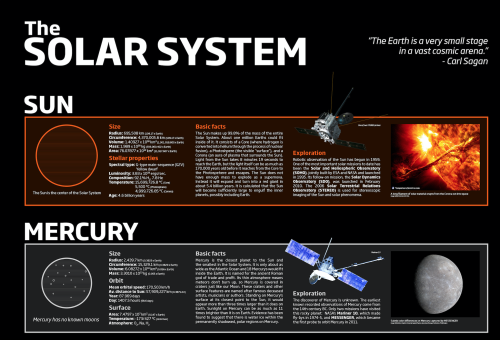
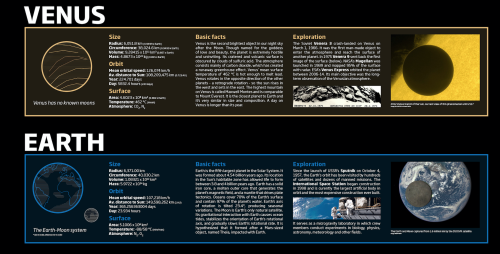
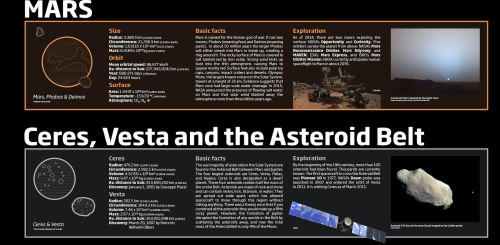
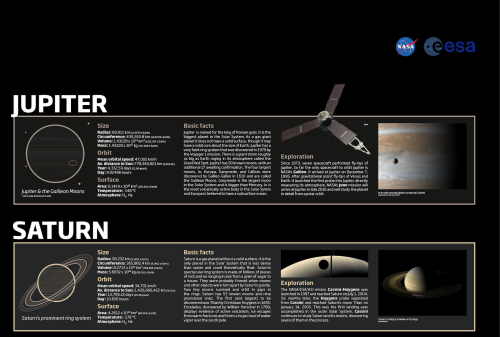
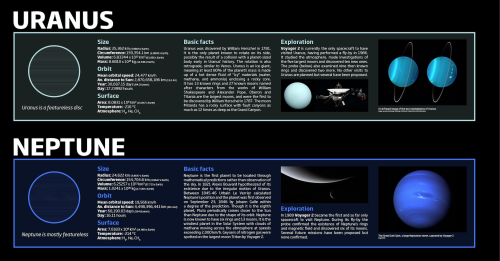
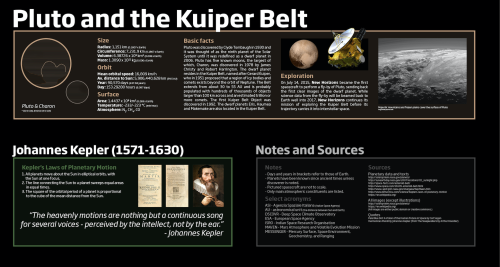
The Solar System

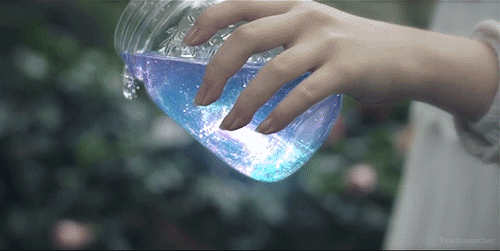
What Are the Bright Spots on Ceres?

Dwarf planet Ceres has more than 130 bright areas, and most of them are associated with impact craters. Now, Ceres has revealed some of its well-kept secrets in two new studies in the journal Nature, thanks to data from our Dawn spacecraft.
Two studies have been looking into the mystery behind these bright areas. One study identifies this bright material as a kind of salt, while the other study suggests the detection of ammonia-rich clays.
Study authors write that the bright material is consistent with a type of magnesium sulfate called hexahydrite. A different type of magnesium sulfate is familiar on Earth as Epsom salt.

Researchers, using images from Dawn’s framing camera, suggest that these salt-rich areas were left behind when water-ice sublimated in the past. Impacts from asteroids would have unearthed the mixture of ice and salt.
An image of Occator Crater (below) shows the brightest material on Ceres. Occator itself is 60 miles in diameter, and its central pit, covered by this bright material, measures about 6 miles wide. With its sharp rim and walls, it appears to be among the youngest features on the dwarf planet.

In the second nature study, members of the Dawn science team examined the composition of Ceres and found evidence for ammonia-rich clays. Why is this important?
Well, ammonia ice by itself would evaporate on Ceres today, because it is too warm. However, ammonia molecules could be stable if present in combination with other minerals. This raises the possibility that Ceres did not originate in the main asteroid belt between Mars and Jupiter, where it currently resides. But instead, might have formed in the outer solar system! Another idea is that Ceres formed close to its present position, incorporating materials that drifted in from the outer solar system, near the orbit of Neptune, where nitrogen ices are thermally stable.

As of this week, our Dawn spacecraft has reached its final orbital altitude at Ceres (about 240 miles from the surface). In mid-December, it will begin taking observations from this orbit, so be sure to check back for details!
ake sure to follow us on Tumblr for your regular dose of space: http://nasa.tumblr.com
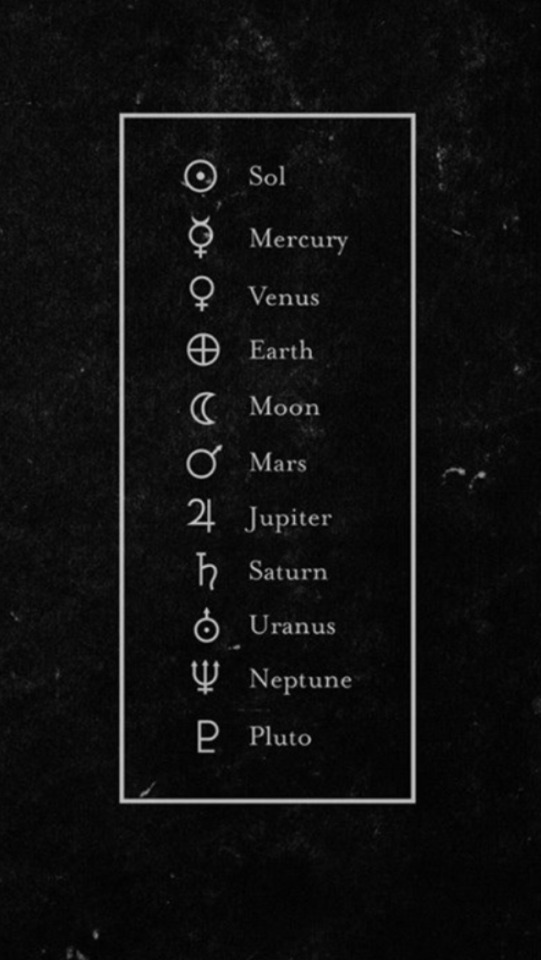
-
 lohikaarmo reblogged this · 9 years ago
lohikaarmo reblogged this · 9 years ago -
 theworldfromrustedtrains reblogged this · 9 years ago
theworldfromrustedtrains reblogged this · 9 years ago -
 happythoughthall liked this · 9 years ago
happythoughthall liked this · 9 years ago -
 is-universe-blog1 reblogged this · 9 years ago
is-universe-blog1 reblogged this · 9 years ago -
 whamtrade-blog reblogged this · 9 years ago
whamtrade-blog reblogged this · 9 years ago -
 ebbingflows reblogged this · 9 years ago
ebbingflows reblogged this · 9 years ago -
 everydayechos reblogged this · 9 years ago
everydayechos reblogged this · 9 years ago -
 overdramaticntrue reblogged this · 9 years ago
overdramaticntrue reblogged this · 9 years ago -
 aballofhappiness reblogged this · 9 years ago
aballofhappiness reblogged this · 9 years ago -
 aballofhappiness liked this · 9 years ago
aballofhappiness liked this · 9 years ago -
 always-starting0ver reblogged this · 9 years ago
always-starting0ver reblogged this · 9 years ago -
 everydayechos liked this · 9 years ago
everydayechos liked this · 9 years ago -
 seasidh liked this · 9 years ago
seasidh liked this · 9 years ago -
 barefootdramaturg reblogged this · 9 years ago
barefootdramaturg reblogged this · 9 years ago -
 zhekiel reblogged this · 9 years ago
zhekiel reblogged this · 9 years ago -
 greendayblink182x liked this · 9 years ago
greendayblink182x liked this · 9 years ago -
 mooonbeams-blog reblogged this · 9 years ago
mooonbeams-blog reblogged this · 9 years ago -
 ghost-waves reblogged this · 9 years ago
ghost-waves reblogged this · 9 years ago -
 otherpeoplescreativity reblogged this · 9 years ago
otherpeoplescreativity reblogged this · 9 years ago -
 otherpeoplescreativity liked this · 9 years ago
otherpeoplescreativity liked this · 9 years ago -
 tater-tot-goddess liked this · 9 years ago
tater-tot-goddess liked this · 9 years ago -
 burymylovely liked this · 9 years ago
burymylovely liked this · 9 years ago -
 omgidontknowwhattotype liked this · 9 years ago
omgidontknowwhattotype liked this · 9 years ago -
 suprematits reblogged this · 9 years ago
suprematits reblogged this · 9 years ago -
 suprematits liked this · 9 years ago
suprematits liked this · 9 years ago -
 thisuserisnotused reblogged this · 9 years ago
thisuserisnotused reblogged this · 9 years ago -
 nonstopregret liked this · 9 years ago
nonstopregret liked this · 9 years ago -
 letssailawayt0gether liked this · 9 years ago
letssailawayt0gether liked this · 9 years ago -
 e4lorescence reblogged this · 9 years ago
e4lorescence reblogged this · 9 years ago -
 veryhappyvegan reblogged this · 9 years ago
veryhappyvegan reblogged this · 9 years ago -
 dearpen-a-lop liked this · 9 years ago
dearpen-a-lop liked this · 9 years ago -
 dearpen-a-lop reblogged this · 9 years ago
dearpen-a-lop reblogged this · 9 years ago -
 youobviouslyloveowls liked this · 9 years ago
youobviouslyloveowls liked this · 9 years ago -
 pluto-pizza liked this · 9 years ago
pluto-pizza liked this · 9 years ago -
 whitefangzzzzzz-blog reblogged this · 9 years ago
whitefangzzzzzz-blog reblogged this · 9 years ago -
 saintvthings liked this · 9 years ago
saintvthings liked this · 9 years ago -
 stand-back-from-the-centrifuge liked this · 9 years ago
stand-back-from-the-centrifuge liked this · 9 years ago -
 fakegothboyfriend liked this · 9 years ago
fakegothboyfriend liked this · 9 years ago -
 the-magicalglobe liked this · 9 years ago
the-magicalglobe liked this · 9 years ago -
 foxfoxwolf reblogged this · 9 years ago
foxfoxwolf reblogged this · 9 years ago -
 theelusivequeen liked this · 9 years ago
theelusivequeen liked this · 9 years ago